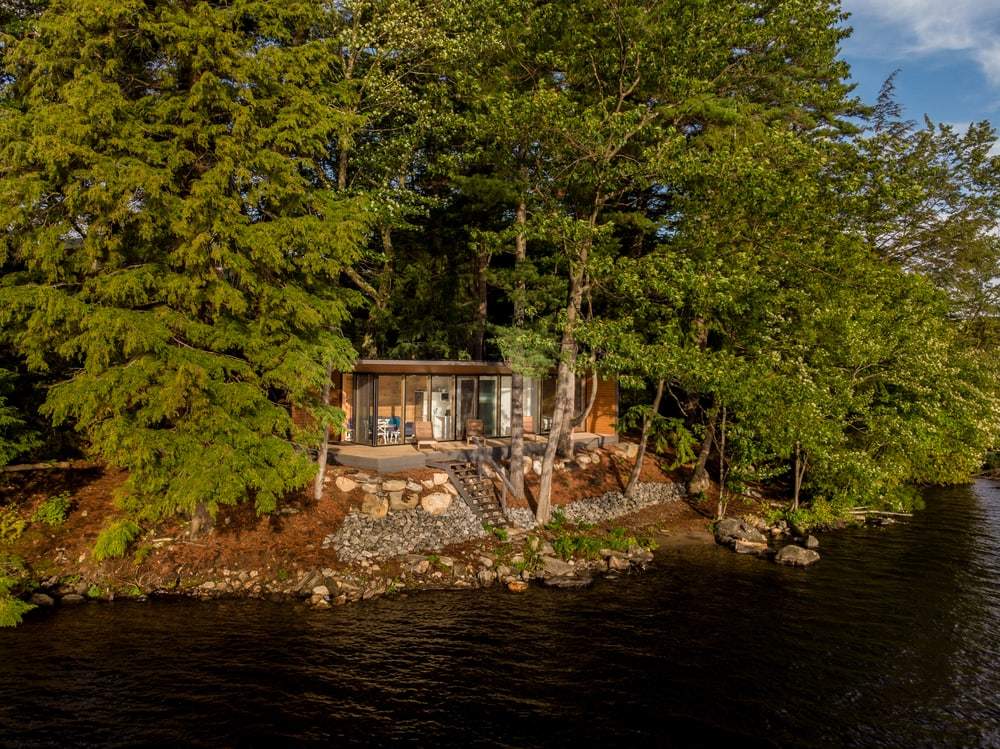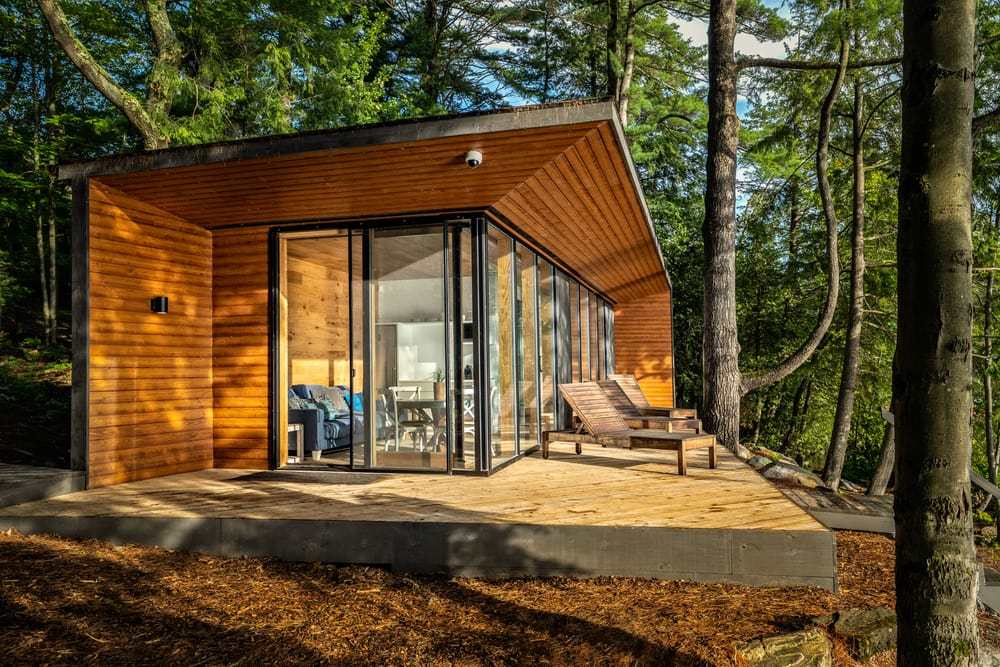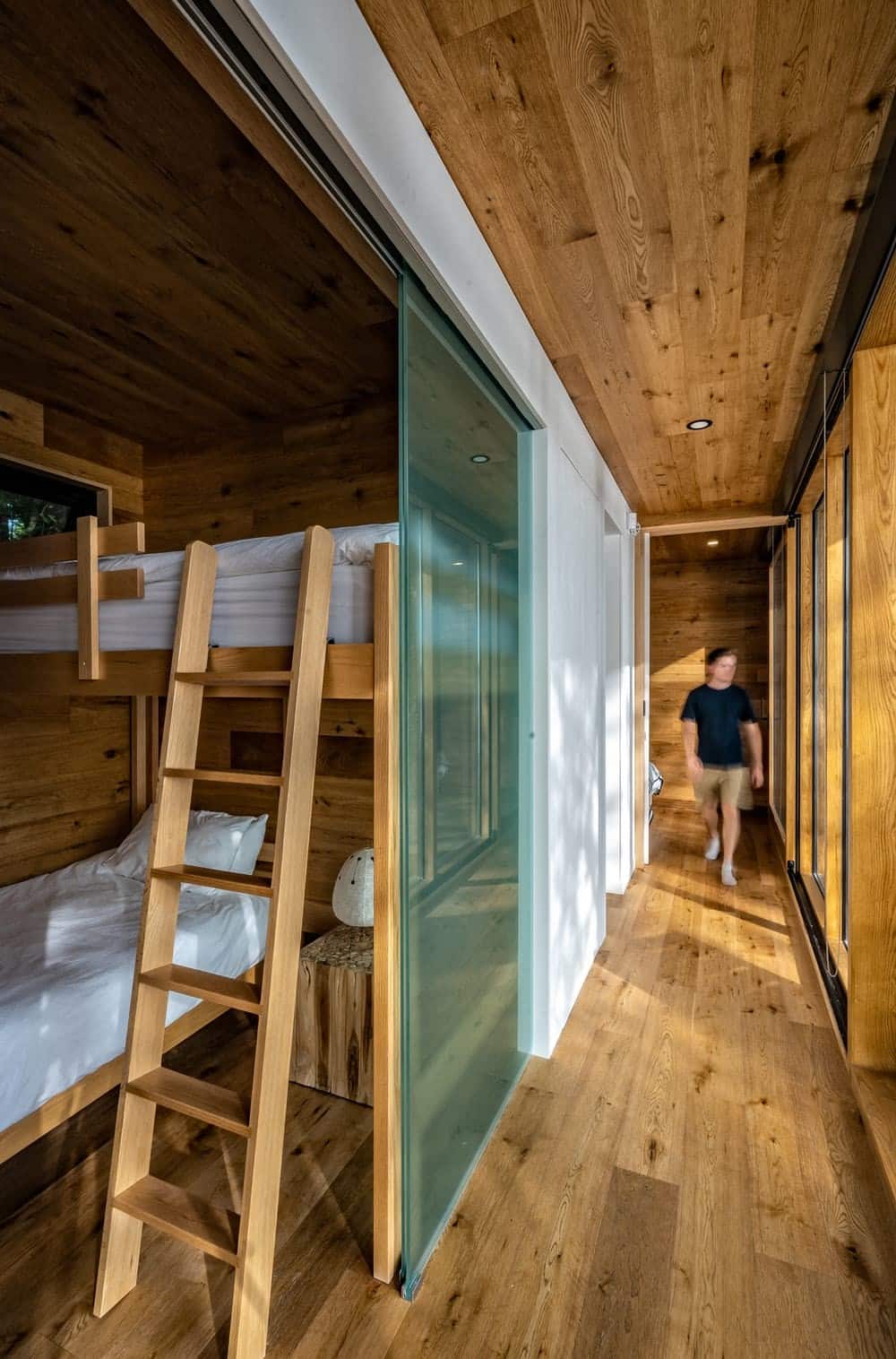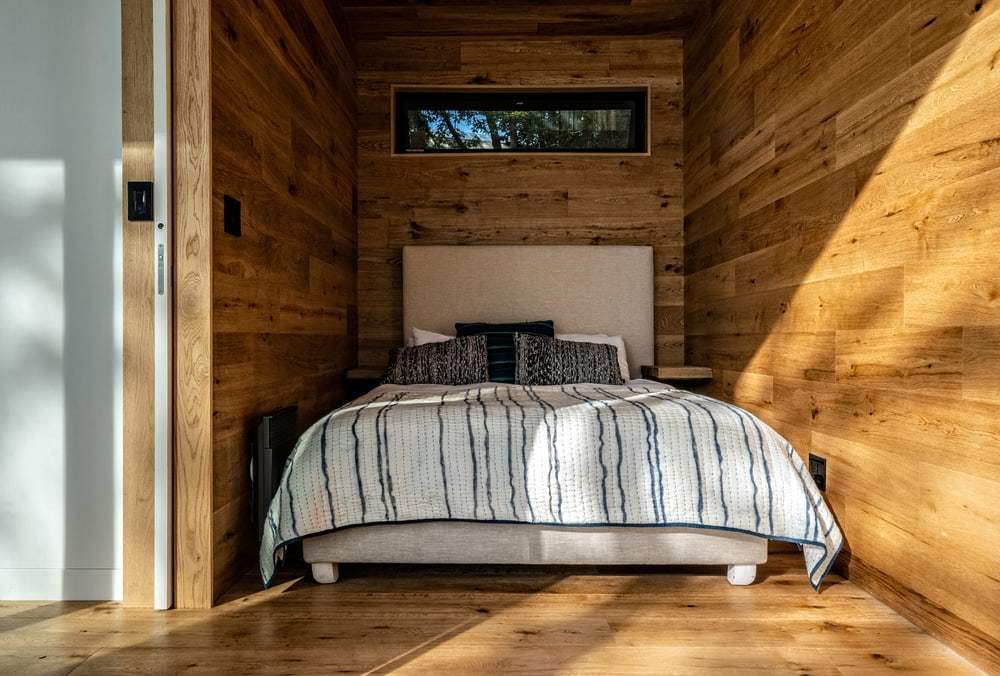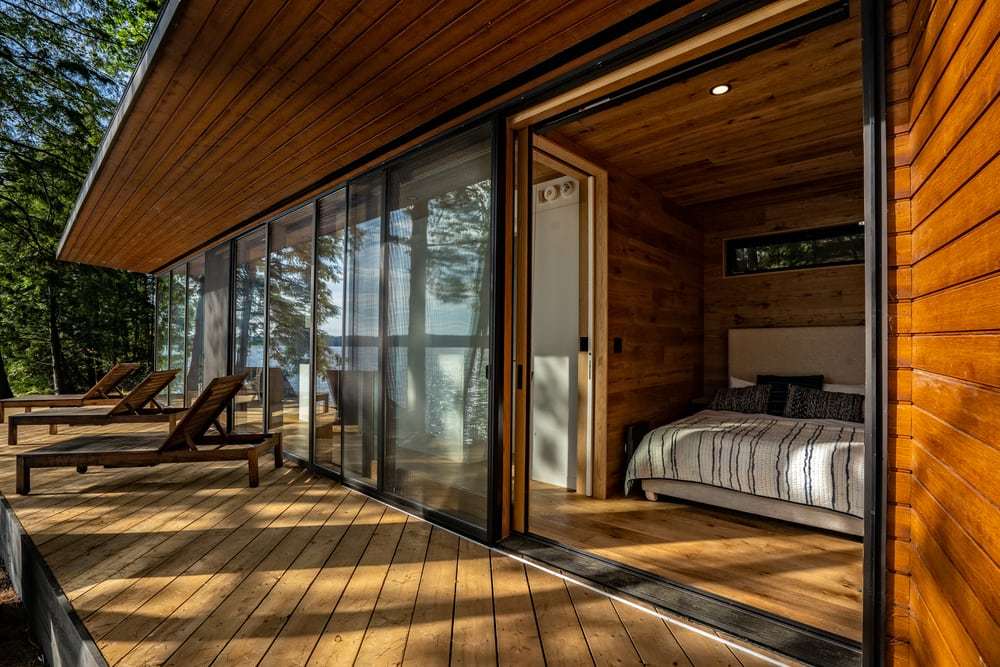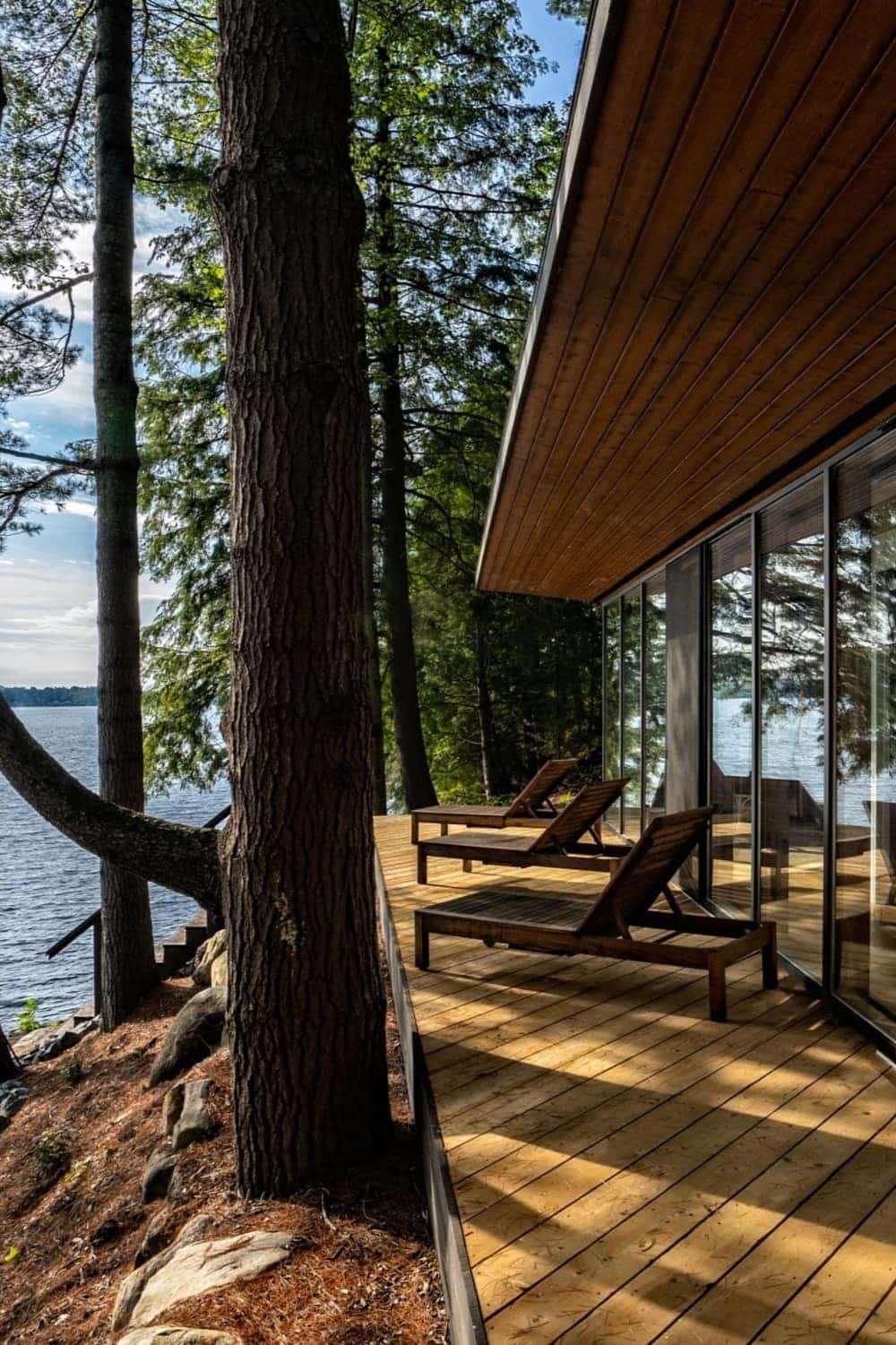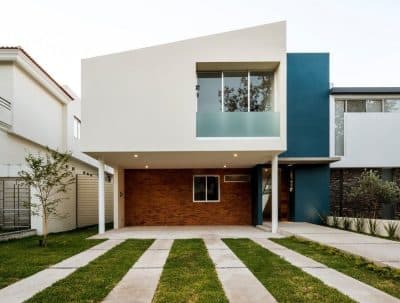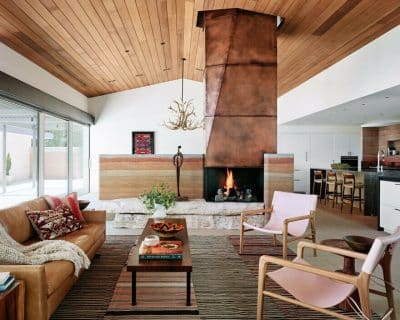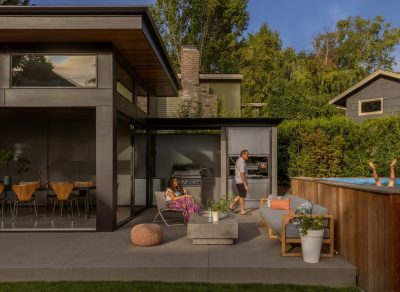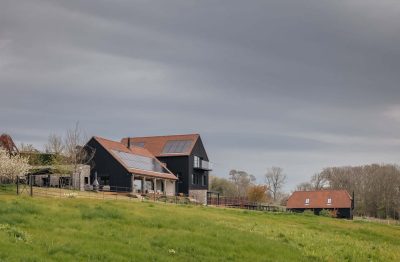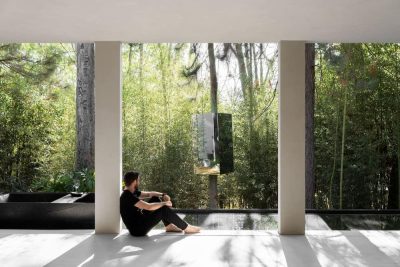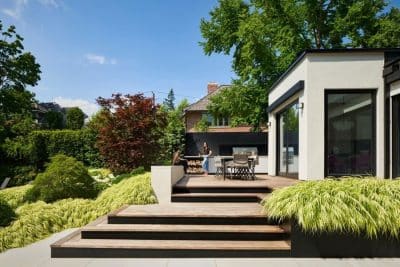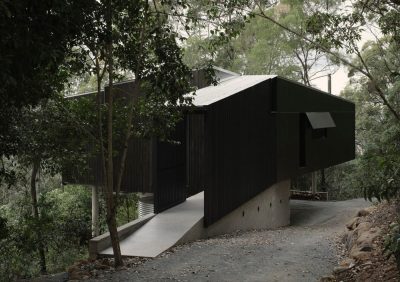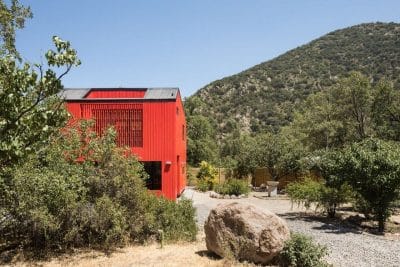Project: Muskoka Modern Prefab Cottage
Architects: Altius Architecture
Location: Lake Muskoka, Ontario, Canada
Photo Credits: Greg van Riel Photography
Text by Altius Architecture
This one was water access only, and was installed from the lake side. There was an existing cottage on the site, and after consulting with the municipality and using some site sensitivity we decided to grandfather the location of the existing building. So after removing the old cottage, we replaced it with this new bunkie on the same site. Given these two conditions, water access only and not wanting to overly disturb the site, pre-fab reigns supreme as a building technique, and given our pre-fab capacity, this seemed like a great opportunity to move forward with a unit we shipped in by boat and placed on the existing footprint, and it worked out beautifully.
Sleeping cabins on cottage properties in Ontario are generally (depending on the municipality) required to be around 600 square feet or less, and have many municipal restrictions we have become comfortable working with. In this case, we achieved a very efficient space layout of two bedrooms with full bathroom and living space in only 480 sq. ft enclosed. It’s literally like a corner unit condo out of a downtown high rise and plunking it into nature. It’s a simple but lovely idea, very modern and simple while sticking to the essential idea of a Canadian cottage. We were inspired by the idea of a compact condominium plan and modern modular structure, in terms of efficiency, and simplicity, and then just plunking it in the perfect spot in nature—simple but just the right kind of simple.
On our modular platform in the shop, we can do anything in 400-600 sq. ft in single module, which is just around this size. The applications for this kind of construction, whether we build and drop in a boathouse, or Muskoka Room or screen porch, a small sleeping cabin or cottage in units, or any accessory structure such as workshop storage room or hybrid carport or remote office, are endless. The Modern Prefab Cottage is a very efficient way to build, and allows us to create a complex architectural product very quickly and site it with less damage and disturbance to the existing site than a traditional on-site build. The quick build time and low level of impact has made many of our clients chose the pre-fab style of building over the traditional type. The best part is we can still achieve a very high quality product, even with the speed we are working at. That way our clients can get into their cottage faster, and still be happy with the final high-quality architectural product.
In a traditional built-on-site situation, with such a small footprint, only 2-3 construction personnel can work on site at once, otherwise everyone is tripping over each other. Trades have to arrive on site, setup equipment and do their work, then take down their equipment, and it’s the same for each building large or small. A pre-fabricated unit, built off site instead of on site, allows us to achieve the economy of scale for small sleeping cabin that is not possible on site. Often these small buildings become expensive as they are dealt with in the same way a cottage would be. All material and personnel have to move on and off site with a build on site regular situation. In our shop we can have more people working at once, and without each trade having to travel to and from a remote location. We’ve noticed pre-fab has a huge advantage in these situations, which is why we’ve been building especially these small size units off site in our shop.
Apples to apples the pre-fab will be more efficient, as we can install the kitchen, for example, while putting the roof on a pre-fab, in our controlled interior environment. All materials remain dry and clean, and are locked up at night, without rain delays, pesky bugs, or having to take out and put away tools.
This particular Modern Prefab Cottage project is a great example of one of our well-developed pre-fab units. Often people think of a trailer when they think of pre-fab bunkie or cottage, but we as architects can accomplish an extremely high level of design and finish in a modular, and there is nothing trailer-esque about it. There is a difference only in the construction technique itself, or how and where it is built—there’s no compromise on quality and sophistication between custom site build and custom modular in the case of our business. This is one of the things that sets us apart as architects and pre-fab unit builders, something that makes our units special.
This one in particular is exciting because we figured out how to make the two sides of the building into structural curtain walls which is cool. This means the windows are actually holding up the roof which makes the design concept into a beautiful glass box without the large steel structure that normally accompanies this kind of idea. So it’s very light-feeling, and actually cheaper, in terms of the structure. The roof structure is cantilevered and hangs quite far out, protecting the deck on two sides, really completing the integral-box feeling. This gives amazing solar geometry with floor to ceiling glass, with wonderful integrated unity to the design. Everything works together. This doesn’t feel or look like a basic module, or a plain box, which is the struggle sometimes with pre-fab. There is a singularness to the design, which is what we always strive for at Altius—that special element of uniqueness to each project is present here. Everything looks like it is cut from a solid block in terms of design but it has a great presence to it, and doesn’t really have the cut-out and reproduced feeling that is something to be avoided in pre-fabs in general.
In terms of sustainability pre-fab tends to in general reduce waste and allow us to easily accomplish a high-quality building envelope. Although this Modern Prefab Cottage isn’t built to passive house standard, with the pre-fabs this feat is very easy to accomplish because they are built in the shop, and it’s possible in general to achieve a high-quality and high-efficiency building envelope which is great in terms of energy use and sustainability.
In terms of the interior finish, we used a modern white oak flooring which continues up wall and across ceiling for a natural traditional cottage feeling but very modern look. We contrasted the white oak with white corian, so everything from the bathroom to the integrated desk white desk is made out of corian. We did this to keep the material palette simple and clean and modern. The sliding glass partitions give privacy to bedrooms when required at night, or for example, when used as reading nooks in the day.

